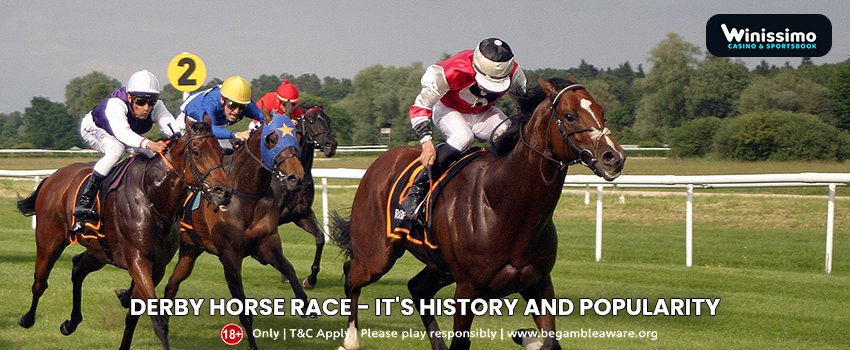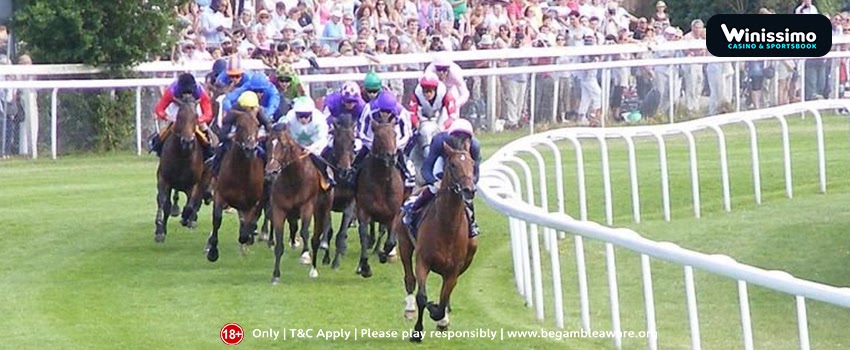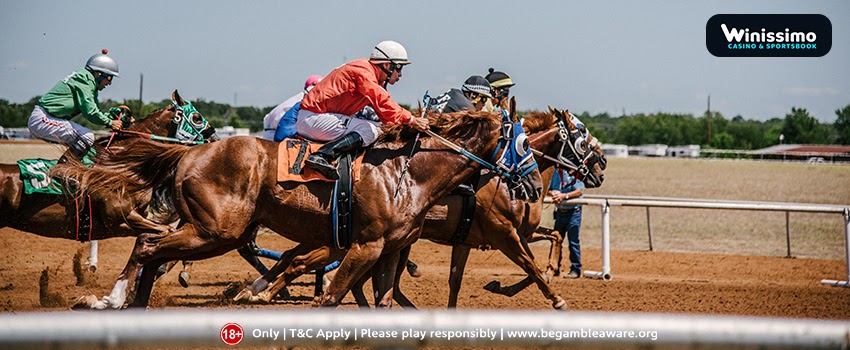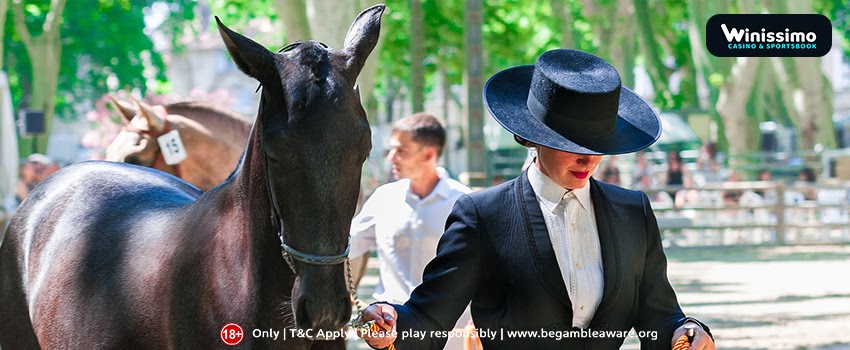
What is The Derby?
The Derby is a Group One race held at Epsom Downs in June which is the showpiece competition in the UK for the entire Flat season. The Derby is also the richest race in Britain, first run in 1780, and although it is open to colts and fillies, it is opposed by colts mostly with the best three-year-old fillies lining up at Epsom in The Oaks the day before.
The Derby is the middle leg of the Triple Crown, which is sandwiched between the 2000 Guineas at Newmarket and St Leger at Doncaster, the fourth Classic of the season, but the Derby is the event that both owners, trainers and jockeys want to win, and it’s one of the racing attractions of the year. There have been several iconic Derby winners throughout history, with more recently the likes of Nijinksy (1970), Shergar (1981) and Galileo (2001), only three of the legendary Flat performers to have engraved their name in the role of honour.
The Beginning
- While there are no specifics of the foundation of the Derby in the archives, tradition has passed on the narrative that the 12th Earl of Derby and Sir Charles Bunbury (the “perpetual president” of the Jockey Club, who was a guest at the house of Lord Derby, also named The Oaks) flipped a coin on whether the race should be named the Derby Stakes or the Bunbury Stakes.
- The first running of the Derby Stakes was open to three-year-old colts (8th 0lb) and fillies (7th 11lb) on Thursday, 4th May 1780, running over a mile at 50 guineas each. There were 9 runners, and while Lord Derby won the coin toss, the first winner, Diomed, the 6-4 favourite, was owned by Sir Charles Bunbury.
Note: As of 1784, the distance from Derby was extended to a mile and a half.
But what of Oaks Stakes – A Fillies race- Held one year early?
- The race, named after the country house of Lord Derby at Woodmansterne, was first held on Friday, May 14, 1779. Open to three-year-old fillies, (8th 4lb), with 50 guineas each and going over a mile and a half, there were 12 runners, and Lord Derby’s Bridget, the 5-2 favourite, won it fairly.
- With the inaugural races of the Oaks and Derby run already, who might have expected that they would provide a continuous string of champions, the only two races in the world to do so, stretching for more than two and a quarter millennia.
Why and how long has EPSOM been racing there for?
- In 1618, when herdsman Henry Wicker found a water hole northwest of the turnpike road, between Epsom and Ashtead, the peculiar origin of Epsom’s rise to fame emerged. While local doctors inspected the water, believed to be undrinkable, it was another 12 years before the water’s extremely purgative characteristics were discovered -a gallon of water containing 480 grains of calcareous nitre.
- What followed was a substance known as Epsom Salts, which was marketed at its height in 1640, at five shillings an ounce.
- The first Epsom race-days were in the 1640s. In his Account of the Uprising, the Earl of Clarendon records in mid-May 1648, during the throes of the Civil War, a meeting of the royalists was held on Banstead Downs, 600 horses were mounted and marched to Reigate, under the pretence of a horse race.
- This indicates that racing at Epsom would have been a routine and well-attended occasion for such an under-cover rendezvous to take place.
- Horse racing was outlawed under the Commonwealth (1649-60), but following its dissolution, the country’s first recorded race meeting took place at Epsom on 7 March 1661, in the presence of Charles II.
- In May and October of 1730, race meets on the downs became a frequent feature amid the fluctuating fortunes in the area, with prizes of cups and plates given by the local aristocracy.

The Premier Event in the racing year
- After the first 50 years (1780-1829), the Derby was strongly established as the racing year’s premier event.
- Derby Day had established itself as not only a major sports event but also “the Londoners’ day out.” towards the end of the 18th century, with or without the approval of their employers. The fascination of Derby Day attracted the bourgeoisie and the workman equally, shoulder to shoulder for the day, and while pursuing a good time, the influx of ready money proved a lure for both.
- Within the sprawl of tents in the Downs, various poker games were played. The most famous dice game and the predecessor to the American game, known as Craps, was Hazard. Also, there was an E.O. A simplistic but always rigged version of roulette, (Even and Odd), and Faro, a card game where players would gamble on what cards they’d turn up against the dealer. In all this, some styles of ladies plied their trade and from morning to night drunkenness was rife.
- While it was impossible to track down the illicit bare-knuckle boxing fights, they were exceedingly popular; before just before the war, the precise venue on the Downs was kept a tightly guarded secret.
- Incredibly, very little was understood at the time by the involved masses about the horses, the times of the races, or the outcomes. The severe horse race betting was done between around two or three hundred noblemen, layers or legs and ‘gentlemen of fortune’ who built a ring around the betting post high on the Downs on horseback or from carriages.
- The scene at the Derby of 1837 was portrayed by Benjamin Disraeli in his novel Sybil and reflects the deep excitement of those waiting, as real today for some as then.
- It soon rose in popularity, though, amid the warnings printed about Derby Day. Attendance rose to ten times the amount in 1823 from around 8,000 in 1795.
- The Epsom Grand Stand Association Committee declared in 1829, at the expense of £ 20,000, purchased from 1,000 shares at £ 20 each:
- The new Epsom grandstand is home to 5,000 spectators. It has a width of 156ft and a depth of 60ft. Doric, the columns of the portico, supporting a raised gallery erected on ornamental iron pillars, the roof includes around 2,000 standing fans, the entire Derby course can be seen by anyone. The County of Surrey magistrates is politely told that they will be admitted free of charge.

The Derby became strongly known as the premier event of the racing year after the first 50 years (1780-1829)
- The old two and four-mile heat format was replaced over several distances with single heats, and two-year-old races became popular. Race meets were no longer run entirely by and for the elite, such as Epsom, Newmarket, Ascot, Chester and Doncaster, but drew the attention of the general public. Fuelled by Bell’s Existence, the general public will know about the more meaningful race meetings and the consequences slowly, though increasingly.
- In 1827, William Dorling, a local printer, published the first “Dorling’s Genuine Card List” race card. The racecard, groundbreaking at the time, not only gave the number of runners, but also their owners, pedigrees, jockeys, colours, and the ‘state of odds’ for the big races.
- The influence of The Dorlings at Epsom lasted for almost a century. In 1839, William’s son Henry became Clerk of the Course, until his son, Henry Mayson Dorling, who was thoroughly unpopular, took over and held the job until he died in 1919.
- The railway system would not only revolutionize horse travel, but sportsmen would be able to travel from course to course in comparative luxury, returning to the mid-19th century. However, against this backdrop, increasingly unscrupulous elements emerged, such as thugs paying to keep the favourite ‘legal’, dishonest jockeys in the pay of ‘legs’ (early bookmakers) and con-men in many ways, who would stop at nothing to separate their money from both the nobility and the merchants.
The stars of the show
- Horses have always been the stars of the show in the history of racing in Epsom.
- Sea-Bird will almost definitely be listed as the best Derby winner of the 20th century by racing professionals, old enough to have witnessed the 1965 Derby. With such full, almost contemptuous authority, Rarely had the race won and his brilliant win later reinforced his place in the Prix de l’Arc de Triomphe.
- Nijinsky, the winner of the Triple Crown in 1970, must have been high on several lists of the many other prominent Derby winners since then. Before going on to sire three Derby winners, Golden Fleece (1982), Shahrastani (1986) and Lammtarra (1995), and the 1986 Kentucky Derby champion, Ferdinand, Ably, aided by Lester Piggott, defeated Sea-son Bird’s Gyr.
- The Derby, Eclipse Stakes, King George VI and Queen Elizabeth Stakes and the Prix de l’Arc de Triomphe were won by Mill Reef with Geoff Lewis on board in 1971. The next year, tragically, disaster hit when he fractured his near-foreleg in school.
- The colt underwent a six-hour surgery with a steel plate placed into his leg and spent six weeks in plaster. He returned to the National Stud to sire Derby winners Shirley Heights (1978) and Reference Point, making a perfect recovery (1987).
- As the first Derby winner to be sired by a Derby winner (Nijinsky 1970), out of an Oaks winner, Lammtarra, who smashed the track record in 1995 and retired undefeated, also joined the record books (Snow Bride 1989). Sired by Galileo (2001), from the Ouija Board, Australia was the second to do so in 2014 (2004).

The 21st century Epsom stars are similarly thrilling
Galileo, an outstanding 2001 Derby winner, was the Champion Sire of the G.B. Three Derby winners have been won by Ireland ten times: New Approach (2008), Ruler Of The World (2013) and Australia (2014), two Oaks winners: Was (2012) and Minding (2016), and, of course, the fantastic Frankel.
His dam Urban Sea, eight years after foaling Galileo, produced another Derby champion, Sea The Stars, who lit up with six scintillating Group 1 win in the spring, summer and autumn of 2009, to be heralded as one of the greatest of all time. The best winners of the Oaks this century were closely matched until 2017. And then Enable arrived.
Epsom Derby betting
The world of sports betting is a growing phenomenon and among all the sports available for betting, horse racing is among the foremost. There is massive interest in betting on the Epsom Derby with online or virtual horse betting bookies around the world. The Derby is the most prestigious Classic where a huge audience will tune in to cheer on the runners. Many online bookies would have expanded sales on one of the biggest races of the Flat Season, including paying an extra spot on each-way bets, so you are encouraged to shop around before making your bets.
Epsom Derby free bets and betting offers
As with any big race, the top online bookies will have Epsom Derby free bets and Epsom Derby betting offers. The bookies will also give you an improved bid on one of the favourites, or they will make a Bet With The Wallet. If you bet on the first race of the Derby meeting, you get free betting. Apart from that if you are interested in other forms of sports betting, you can visit a trusted platform like Winissimo.
The betting rules for different sports are also available on the site for your reference. You can follow the sport of your choice and place your wager accordingly.
Conclusion
The Kentucky Derby has not only been the leading American horse race over the years but also a larger cultural festival. Every year, tens of thousands of Kentuckians and tourists flock to Churchill Downs to engage in every Derby weekend’s numerous galas, dinners, and other social activities. And this, in turn, is taking the world of virtual horse race betting to new heights of popularity as well.
